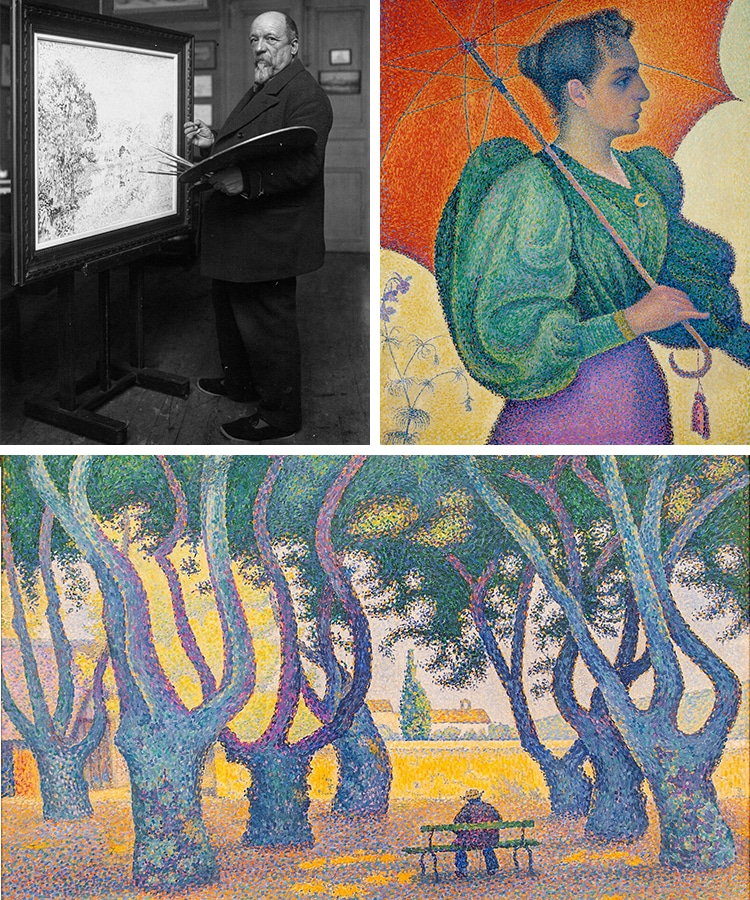
The late 19th century was a time of significant artistic exploration. After the Impressionists shook up the status quo by rejecting the rules of the beaux-arts (“fine arts”) with their fleeting depictions of everyday life, other painters followed in their footsteps by exploring more aesthetics driven by an interest in color, symbolism, and brushstrokes. Called the Post-Impressionists, this movement was not as unified as its predecessors. Instead, it pioneered a variety of styles.
One of the most well-known aesthetics to emerge from this period was Pointillism, which was spearheaded by two artists in particular: Georges Seurat and Paul Signac. While the former is best known for his world-renowned masterpiece, A Sunday Afternoon on the Grande Jatte, his friend and fellow painter is less familiar. Signac was influential in helping Seurat develop the Pointillist method, which involved arranging colors individually on the canvas. Not only that, but he also had close relationships with other famous artists, including Vincent van Gogh, whom he visited in Arles and praised his artistic talent.
Scroll down to learn more about Signac and his creative career.
Who was Paul Signac?
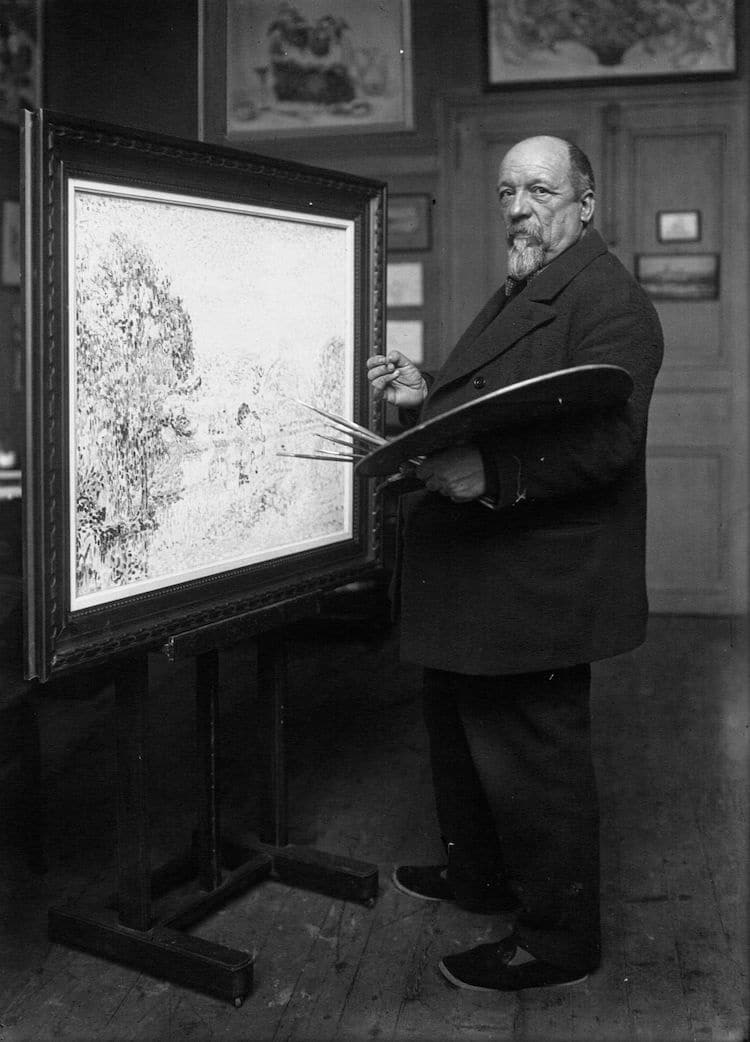
Photo of Paul Signac, 1923 (Photo: Wikimedia Commons, Public domain)
|
Full Name
|
Paul Signac
|
|
Born
|
November 11, 1863 (Paris, France)
|
|
Died
|
August 15, 1935 (Paris, France)
|
|
Notable Artwork
|
Portrait of Félix Fénéon (1890)
|
|
Movement
|
Pointillism
|
Paul Signac (1863–1935) was a French Post-Impressionist painter best known for helping Georges Seurat pioneer the Pointillist style. Originally from Paris, he began his creative career inspired by the Impressionist works of Claude Monet. Later, when he met Seurat, Signac became deeply invested in color theory and adopted the systematic approach of arranging individual colors on the canvas to create unique compositions. He worked in this style for the rest of his life, carrying on the aesthetic after Seurat’s early death at the age of 31.
What is Pointillism?
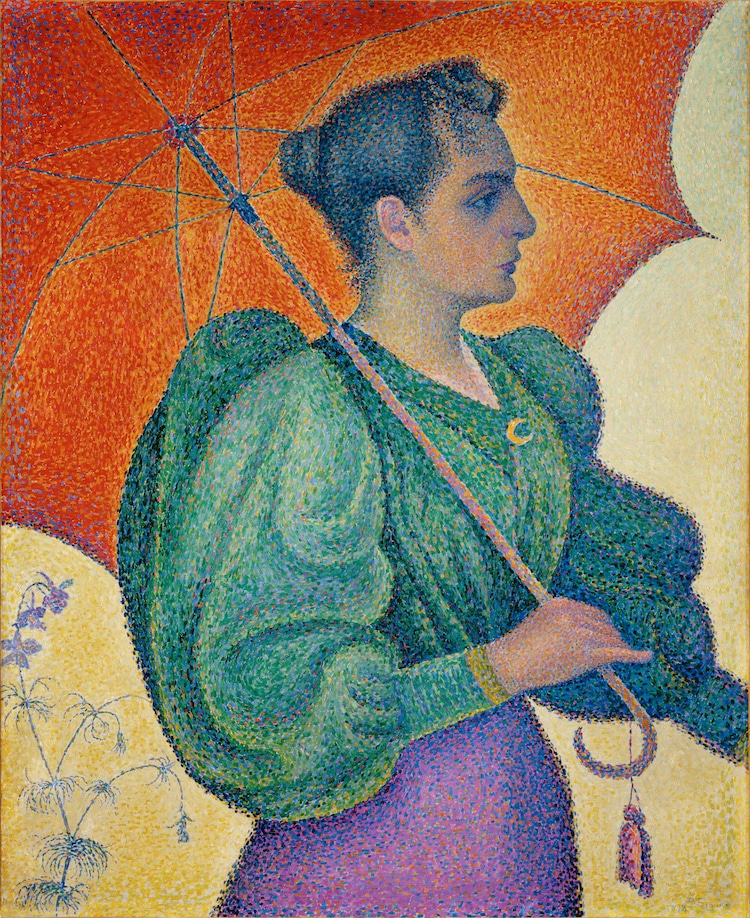
Paul Signac, “Woman with a Parasol,” 1893 (Photo: Wikimedia Commons, Public domain)
Part of the Post-Impressionist movement, Pointillism is the technique of painting with distinct dots of color, which are meticulously applied in patterns to compose a cohesive image.
While Impressionists, such as Claude Monet and Vincent van Gogh, often used small dabs and strokes of paint as part of their technique, Pointillism artists took this idea a step further by painting tightly packed, individual dots of pure color. When viewed from afar, the viewer’s mind and eye blur the dots together to create detailed images, comprising a fuller range of tones than the dots provide alone. The term “Pointillism” was, in fact, coined by art critics in the late 1880s to ridicule the works of these artists. Little did they know that the term would be used today as a positive association for some of the world’s most renowned master painters.
Characteristics of Paul Signac’s Art
Bold Color Palette

Paul Signac, “Place des Lices,” 1893 (Photo: Wikimedia Commons, Public domain)
One of the most noticeable aspects of Signac’s art is his bold use of hues. Not bound by realism, he opted for an expressive color palette that conveys certain emotional qualities within the work.
Interest in Nature
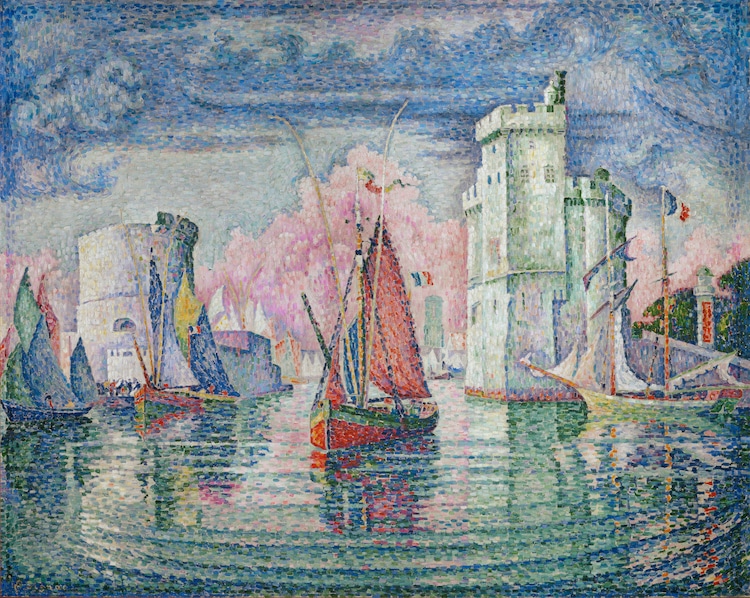
Paul Signac, “Entrée du port de la Rochelle,” 1921 (Photo: Wikimedia Commons, Public domain)
Post-Impressionists, like Impressionists, were deeply inspired by their surroundings, especially landscapes. Signac was particularly drawn to the views in the South of France and created numerous paintings of the Mediterranean sea.
A Sense of Stillness
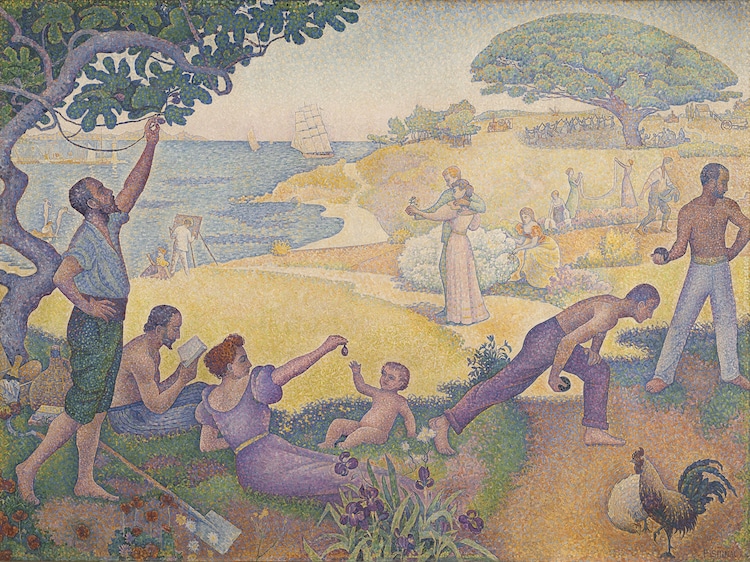
Paul Signac, “In the Time of Harmony. The Golden Age is not in the Past, it is in the Future,” 1893–1895 (Photo: Wikimedia Commons, Public domain)
As a result of using the Pointillist style, Signac’s art possesses a tapestry-like quality. His human figures, though carefully modeled, resemble dolls. In addition, this approach gives the paintings a sense of stillness, like the scene is frozen in time.
Friendships with Other Artists
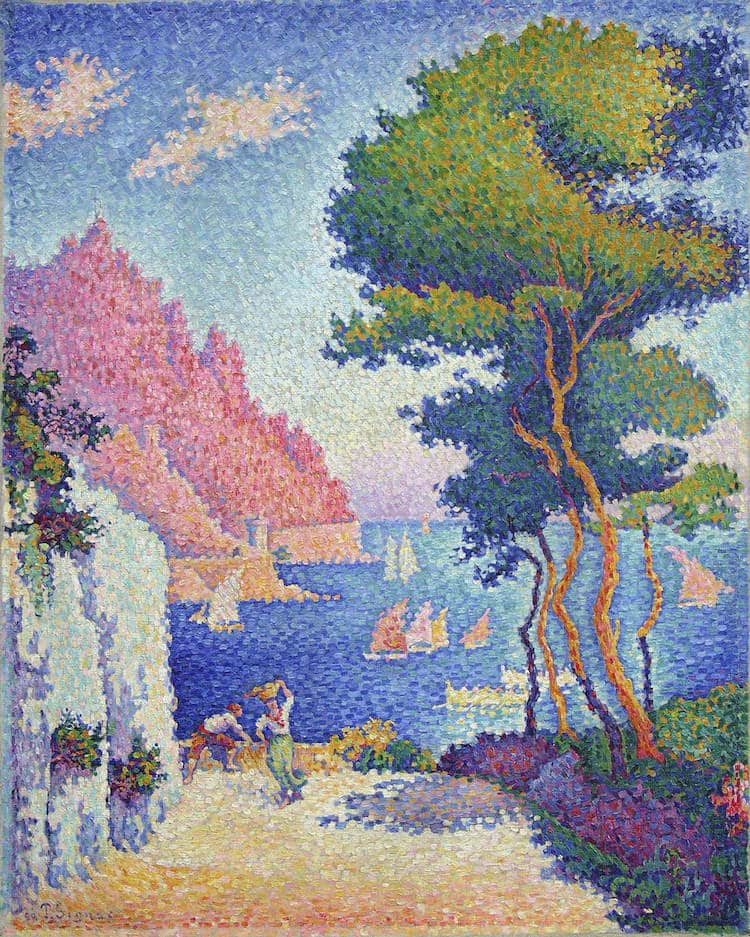
Paul Signac, “Capo di Noli,” 1898 (Photo: Wikimedia Commons, Public domain)
Although Signac’s art was significant in its own right, he also had an influence on other artists of the time. Together with Post-Impressionists Odilon Redon, Georges Seurat, and Albert Dubois-Pillet, he helped form the Société des Artistes Indépendants in 1884, whose motto was “Neither jury nor awards.” This meant that, unlike other major exhibitions of the era, the Société allowed artists to submit their art without having to pass a jury. Some of the artists who took part include Henri de Toulouse-Lautrec, Vincent van Gogh, Paul Gauguin, and Paul Cézanne. Signac even served as president of the group from 1908 until his death in 1935.
Vincent van Gogh

Paul Signac, “Van Gogh’s Yellow House (Arles, Lamartine Square),” 1932 (Photo: Wikimedia Commons, Public domain)
Post-Impressionist Vincent van Gogh is well known for being underappreciated during his lifetime, and even being ridiculed for his unique artistic vision. Signac, however, was among the few who supported Van Gogh’s career. After meeting in Paris and painting together, Signac traveled to Arles to visit Van Gogh at the Yellow House.
Legacy
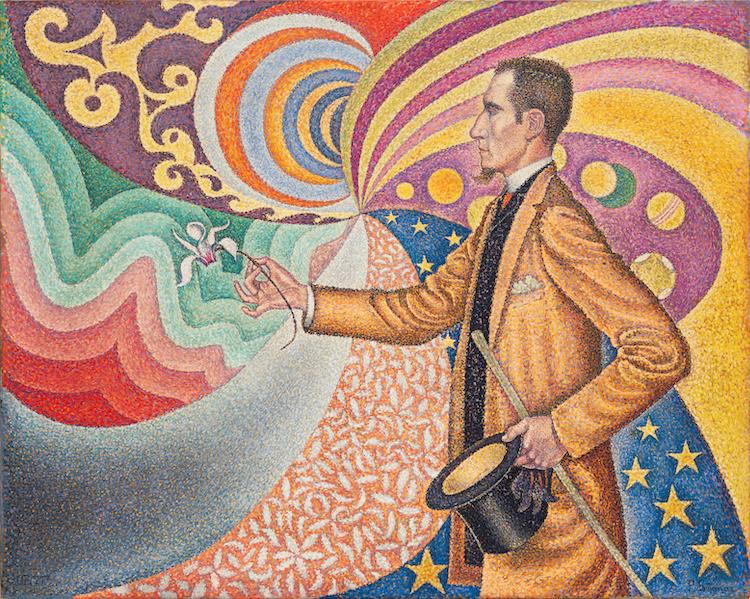
Paul Signac, “Portrait of Félix Fénéon,” 1890 (Photo: Wikimedia Commons, Public domain)
Due to Seurat’s early death, Signac was instrumental in carrying on the principles of the Pointillist style. His oeuvre of diverse and interesting works had a large impact on other Post-Impressionist styles, most noticeably Fauvism, which embraced the expressive potential of color.
Frequently Asked Questions
What was Paul Signac famous for?
French artist Paul Signac is famous for helping develop the Pointillist style alongside Georges Seurat.
Related Articles:
What is Fine Art? Learn About the Definition and the Different Types of Fine Art
Monumental Masterpieces: 10 of Art History’s Most Famous Large-Scale Paintings
20+ Revolutionary Art Movements That Have Shaped Our Visual History
